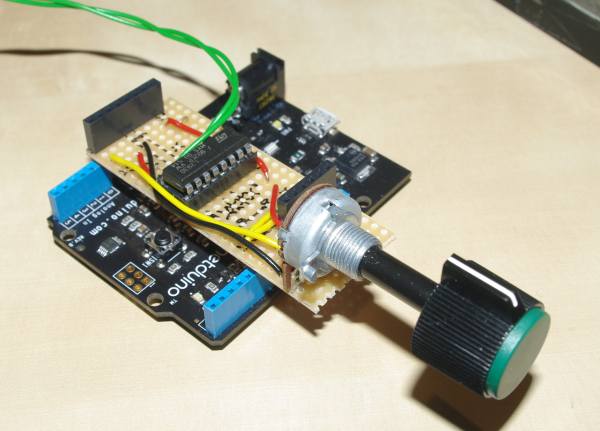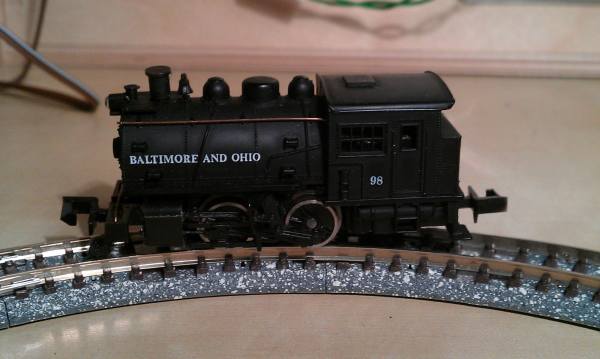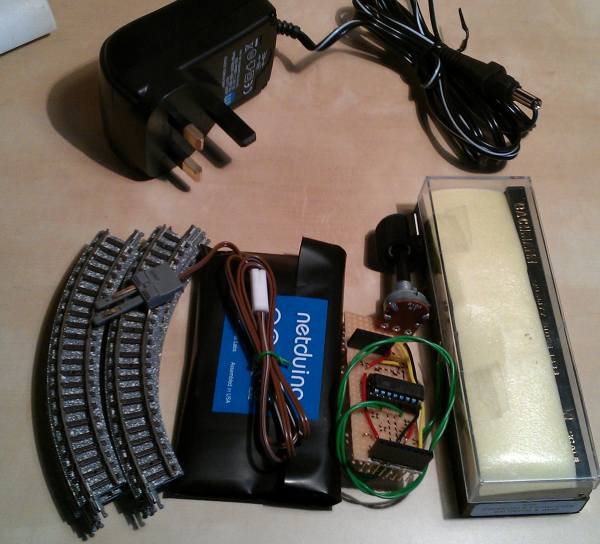The object of the exercise is to produce a train controller for a 3 year old, that only has one knob, but that limits (in software) both top speed and acceleration/deceleration. The theory being that the little hands of my Brother’s 3 year old nephew are unlikely to ruin his embarrasingly expensive trainset by either crashing a loco at full speed or mashing the gears by going from full ahead to full reverse in a split second.
What I did was wire up a simple motor shield using an H-bridge. If you know what that means, skip ahead. If not, read on. An H bridge is an arrangement of transistors (or other switching gidgets, such as relays) in an H shape. The transistors switch on and off in response to the Netduino’s very feak and weeble signal. The transistors work in diagonal pairs across the H shape, to allow you to reverse the power to the motor (or in this case, the train tracks) to reverse the direction of rotation (or locomotion).

But it wasn’t enough to make my brother a train controller, I also had to send him a whole model railway, including a train. I needed something I could pack up small (tiny) for shipping, which meant n-gauge, but not too expensive, which doesn’t really mean n-gauge. God Bless Ebay! I was able to find the tightest radius N-gauge track in production and have it shipped specially from Japan Tomix C103-60 if you’re interested - I bought set 91080 “super mini oval layout set” but left out the straights. (You weren’t interested were you?)
I also found a miniscule little 0-4-0 train from Bachman. It’s an American design, but it’s also the shortest wheelbase train I could find. This thing would think twice before staring down a cockroach. Coupled with a couple of little trucks (which grumbled on the tight radius) and some comedy cargo I had a complete, self contained model railway, complete with power supply, controller (software re-programmable), track and rolling stock, and the whole lot fit into an old 3.5” hard disk box for shipping to the other end of the world.

This is the entire trainset dismantled and ready for packing up. The whole lot was squeezed into an old 3.5” hard disk box.

I’ll write up the electronics and software details in another post (including evidence of my super-human ability to make soldering look harder than it is).